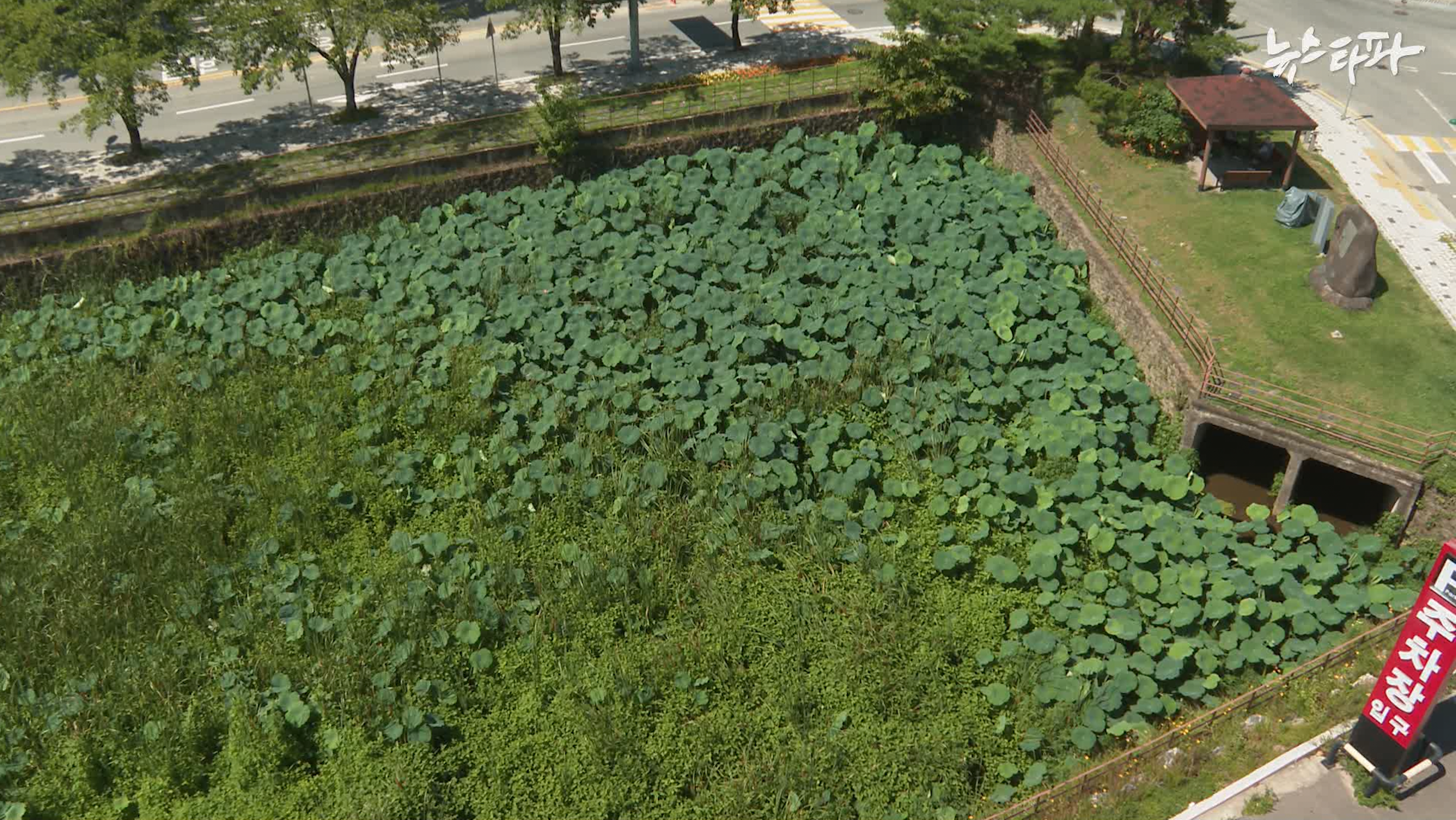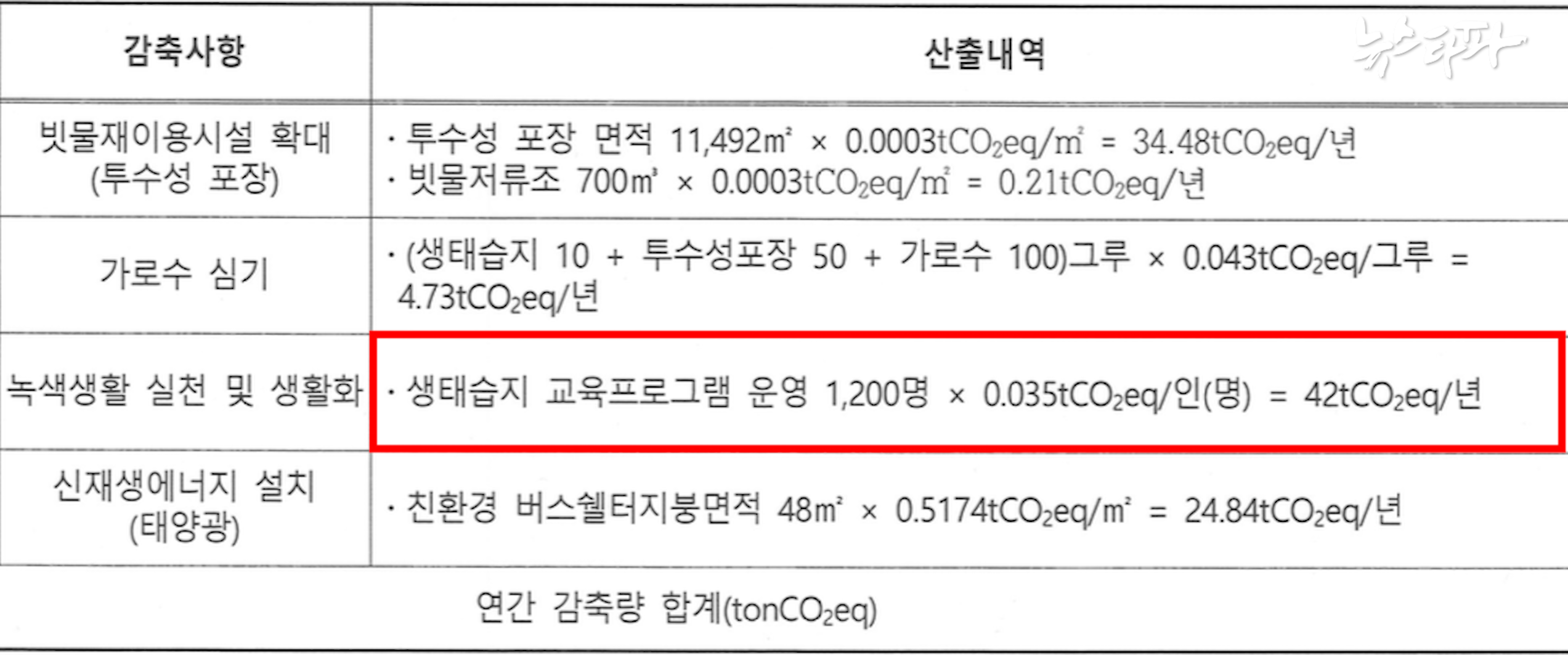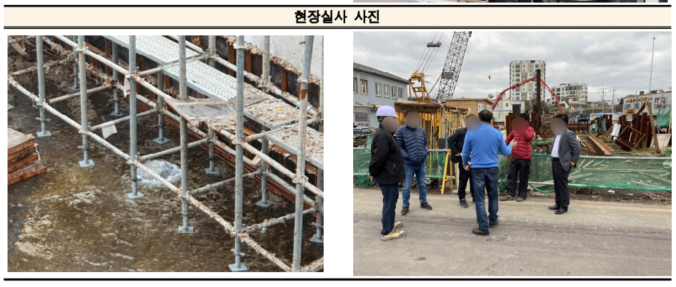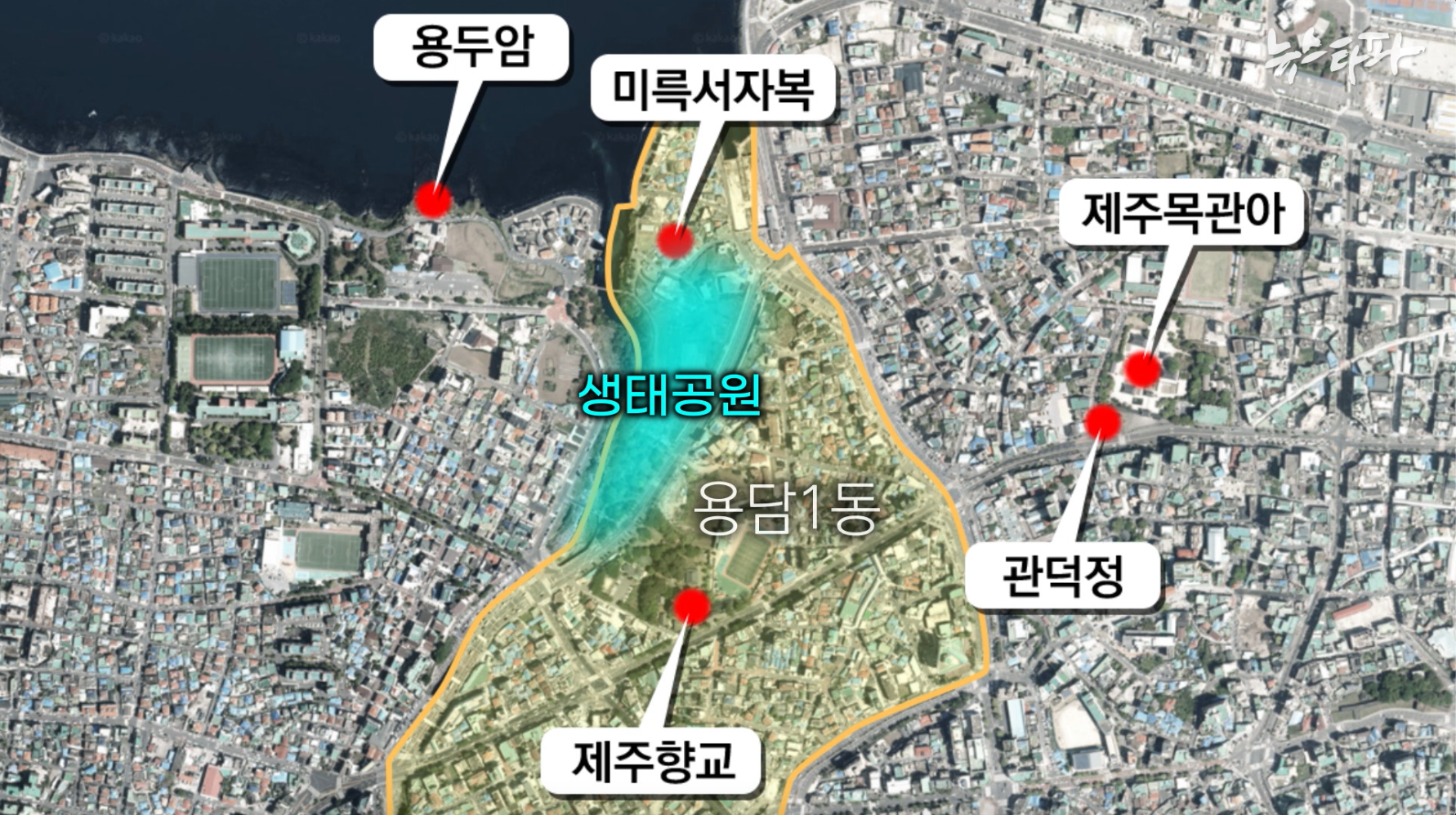Newstapa visited the project’s sites in Gongju. In particular, the wetlands site, to which Gongju city government announced it will invest KRW 680 million (USD 580,204) to recover its ecosystem, was strange. The Songjangbaemi wetlands, located in the central part of the city, was already full of perennial plants such as cattails and lotus. These plants are known to purify water. Around the wetlands was already installed with metal fences, and there were enough benches for visitors.





